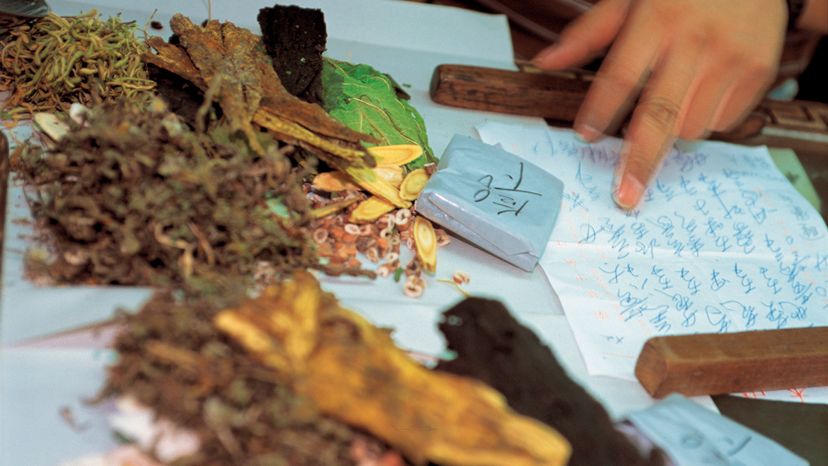The treatment strategy is to repel the wind with herbs that are dispersing in nature, such as Japanese catnip (Schizonepeta tenuifolia, jing jie) and Siler divaricata (fang feng). Herbs that drain dampness are also employed in order to clear the nasal passages and sinuses; the major herbs for this purpose are Angelica dahurica (bai zhi), magnolia flower buds (xin yi hua), and Xanthium sibiricum (cang er zi). This combination is known as Xanthium Decoction. An appropriate patent medicine is Bi Yan Pian.
Typically, an underlying weakness, often a deficiency of lung and spleen qi, makes persons with allergies susceptible to allergic reactions. Lung qi is responsible for the proper function of the entire respiratory tract, including the nasal passages. Spleen qi controls the transport of fluids; when spleen qi is impaired, weakening digestive function, it can lead to an overproduction of mucus, which tends to collect in the lungs. This weakness of qi is treated with tonifying herbs that bolster lung and spleen function, such as Codonopsis (dang shen), Atractylodes (bai zhu), Poria (fu ling), and prepared licorice (zhi gan cao).
An appropriate patent medicine for this type of deficiency is Six Gentlemen Teapills. This formula also contains Pinellia (ban xia) and aged citrus peel (chen pi), which enhance the base formula's ability to clear mucus and dry dampness. A traditional Chinese medicine practitioner may customize the formula to meet a patient's individual needs. For example, Chrysanthemum flowers (jua hua) and Cassia seeds (jue ming zi) can be added to soothe itchy eyes, and jujube dates (da zao) can be included to enhance the overall antiallergic action of the formula.
